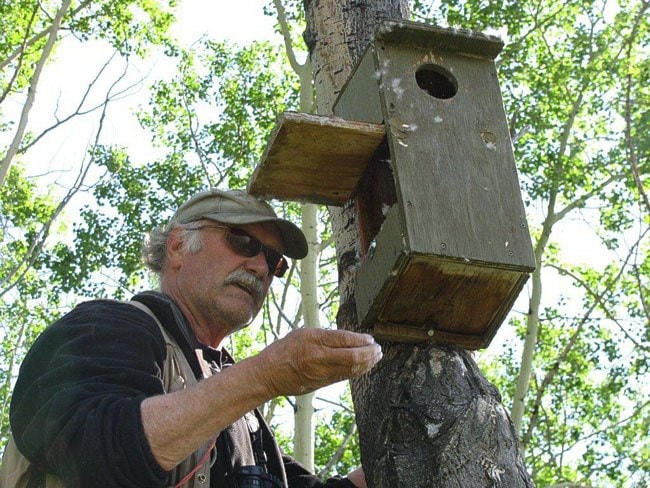This summer has ushered in some good news for Yukon’s bird-lovers.
The territory’s American kestrel population seems to be making a comeback for the first time in 20 years.
Researchers at the Yukon Research Centre have found nine breeding pairs of American kestrels and 14 fledglings in nest-boxes they’ve set up across the territory to monitor the population.
That’s up from five breeding pairs and five fledglings last year, and just one pair in 2013.
Dave Mossop, a biologist and emeritus professor at the research centre, said he expects to find about 20 fledglings before the end of the summer.
“A few years ago, we had absolutely zero birds being produced, and last year we had a small number of adults producing youngsters,” he said. “It looks like this year things are turning around, which is good news.”
American kestrels are small birds of prey that were once the most abundant falcon species across North America. But they began to decline in the mid-20th century, for reasons that are still unclear. Since 1966, the population has dropped by 47 per cent across the continent.
Mossop said the drop in numbers has been much more dramatic in the Yukon, likely because this is the edge of the birds’ breeding range. He estimated that at least 90 per cent of the population has disappeared since the decline was first observed in the territory in 1996.
In the 1990s, more than half of the 150 nest boxes Mossop set up between Whitehorse and the Arctic Ocean were occupied by breeding kestrels. After a steep decline, the population bottomed out in 2007, when not a single bird was born in the nest boxes.
But despite this year’s good news, Mossop warned that it’s hard to say whether the upward trend will last. He said most of the fledglings that he monitors and bands in the Yukon are never seen again once they leave on their first migration. That means that even if more kestrels are being born, the population won’t necessarily grow.
“They may be on the comeback. We certainly hope so,” he said. “We can’t promise it’s going to continue.”
Chris McClure, director of the American Kestrel Partnership in Idaho, said the number of breeding birds and fledglings seems to be higher than usual in that region as well. But he’s doubtful that this means the population is bouncing back.
“Just off the top of my head, I’d say it’s a blip, because it goes back to the 60s, this decline,” he said. He said the bumper year in Idaho could be due to the recent mild winter and wet spring.
McClure said nobody knows why the American kestrel population has dwindled so dramatically. Many explanations have been proposed, including the spread of West Nile virus, habitat loss, and growing numbers of Cooper’s hawks that may have outcompeted the smaller kestrels.
But the research done so far doesn’t support any of those theories. McClure said kestrels are particularly hard to study, because they’re too small to outfit with satellite transmitters. That means if anything is causing them to die off on their migratory routes or in their southern wintering grounds, it would be difficult for scientists to find out about it.
For his part, Mossop suspects climate change may have something to do with the rapid decline he’s seen in the Yukon population. He pointed out that kestrels from the Yukon migrate over the southwestern United States, a region that has suffered from severe drought for years. He also said pesticide poisoning may be a factor. He thinks it’s unlikely the decline is being caused by anything happening in the Yukon.
Contact Maura Forrest at
maura.forrest@yukon-news.com
